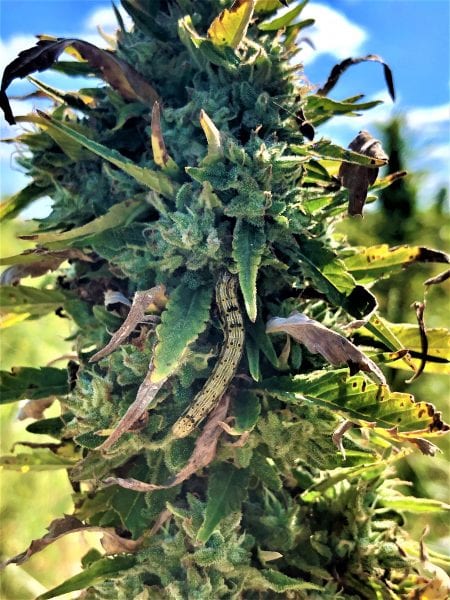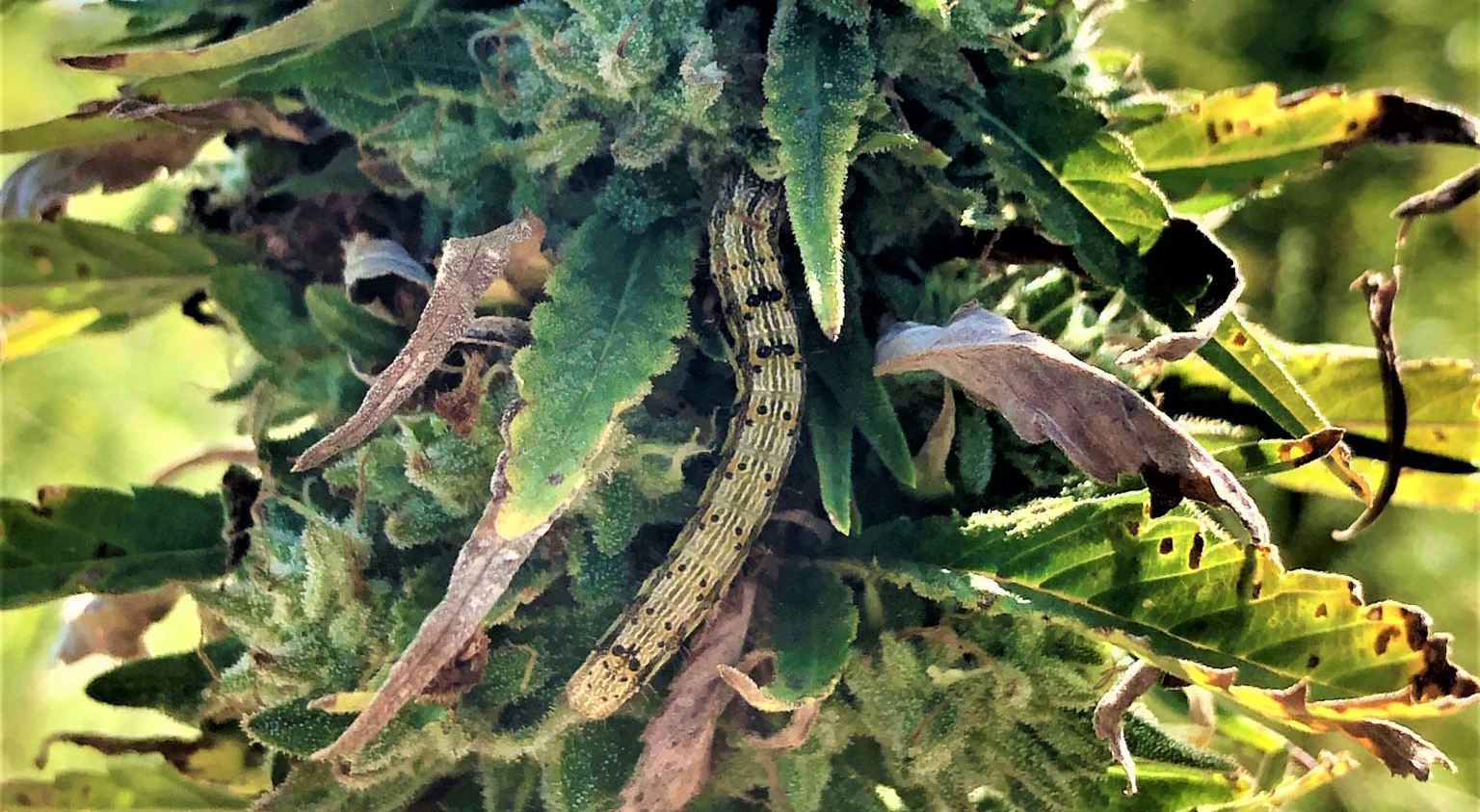Crop Production

 Caterpillars emerged as a significant pest of industrial hemp, Cannabis sativa, in Alabama’s first growing season. While Alabama Extension professionals have found multiple caterpillar species on hemp throughout the current season, the primary pest causing damage this late is the corn earworm, Helicoverpa zea. The majority of corn throughout the state has begun to dry or is harvested, so hemp provides an attractive alternative for adult moths looking to lay eggs.
Caterpillars emerged as a significant pest of industrial hemp, Cannabis sativa, in Alabama’s first growing season. While Alabama Extension professionals have found multiple caterpillar species on hemp throughout the current season, the primary pest causing damage this late is the corn earworm, Helicoverpa zea. The majority of corn throughout the state has begun to dry or is harvested, so hemp provides an attractive alternative for adult moths looking to lay eggs.
The larval form of the corn earworm moth is the damaging life stage. Professionals did see stem and leaf feeding earlier in the season, but currently, larval feeding on the flower buds is causing the most damage. In addition to yield loss, the wounds caused by feeding make the plants vulnerable to bud rot. This further reduces the quality and yield of the plant. This makes hemp grown for CBD oil especially susceptible to corn earworm damage.
Chemical Control
The Alabama Department of Agriculture and Industries (ADAI) approved several products for pest control in hemp. While these are now legal to apply, it is important to keep in mind that caterpillars are best controlled when they are small. Most pesticides will have little to no effect on bigger caterpillars. Chemical control should be used as a last resort, as proper fertility, irrigation, and sanitation should all be prioritized over pesticides. See the Alabama Extension Hemp IPM Guide for management strategies and a complete list of approved pesticides.

